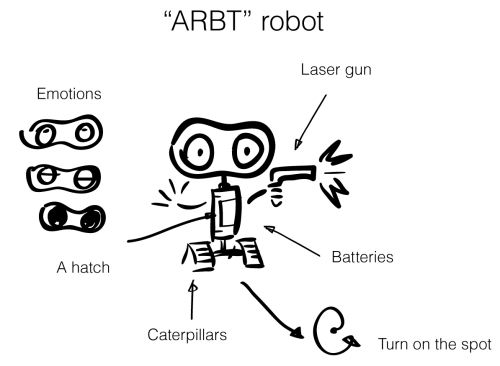The following are the various components in a game:
- Protagonist: This is the main game character, the persona the player associates himself with. In most cases, it is under direct control of the player.
- Game trigger: These are the various interactive elements (switches, buttons, and so on) that the player can operate; they may have an effect on the game world or on states of characters.
- Enemy: These are the characters (or situations or events at abstract level, for example, time can be the enemy too) that are hostile to the main character and its progress in the game. Their main objective is to hinder the player.
- Friendly/neutral character: This is any persona that has no aggressive plans towards the main character. Usually, this is something extra, walking the game level. Sometimes, they should be protected by the protagonist or they can be player's companions helping to perform some specific tasks.
Some games can be handled without any characters. Most of the puzzle games, for instance, the match-three games, have no persona. Are various color bubbles characters? I don't think so. They are game triggers, I would call them "precharacters" or "character ancestors" because they do interact with the player and perform some actions but their personality, both functional and graphical, is minimal. Their digital soul is small. But there can be the exceptions too, for example, tile-matching game Chuzzle by PopCap Games uses not soulless color triggers but real characters named Chuzzles—shaggy balls with eyes and some personality that are very cute.
A main character is the representation of the player in the game universe; this is his avatar, so he should like its appearance and behavior. This does not mean that the character must be perfect, but he must have some charisma to be attractive. In other words, he should have some unique features.
Frequently, there are characters in the game but no a protagonist. In this case, the game operates with the characters, enemies, and triggers, but the main character is the player himself; he plays the role of an abstract demiurge controlling the game world. For example, most puzzle, tactical, and strategic games do not have any player representation. In this case, the player empathizes with not only one person but the whole game world. The following figure shows a character and its components:

Before designing any type of characters you should think about its graphic look and functionality. Try to create a list of the actions it would perform, starting with the basic ones: walking, jumping, shooting, and so on. This will help you to determine the character's anatomy and dimensions. For example, if he has to collect some items from the ground, he should have arms of a proper length and should be able to bend. If there are going to be ladders in your game, the character should have a constitution letting him climb up and not being stuck by the ladder. The world outside the character must be proportional to him and vice versa.
To design the character right, you need some concept art or sketches to determine its look. Of course, big game studios feature every breathtaking example of concept art and real states of art; everyone wants to buy such images and put them on the wall. But at the first step of development, they are not necessary at all. The sketches can look like some doodles, more important are the ideas that can be written there. Usually every interesting concept is born from a scrawl, sometimes made on a table napkin. So, don't worry about the graphic quality for now; you will need it later, when the working process on sprite or 3D models starts.
